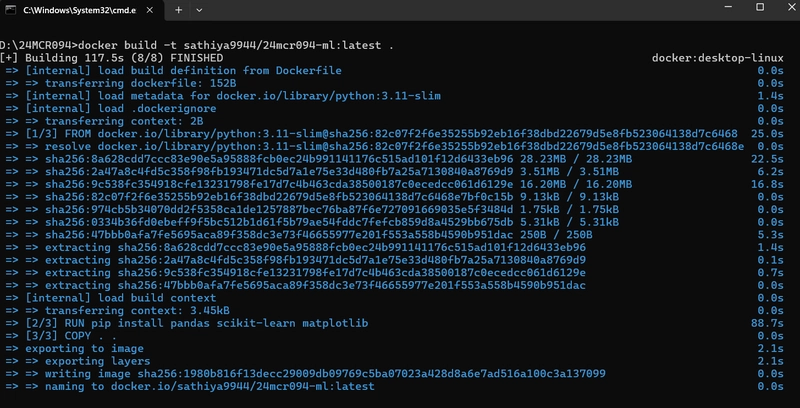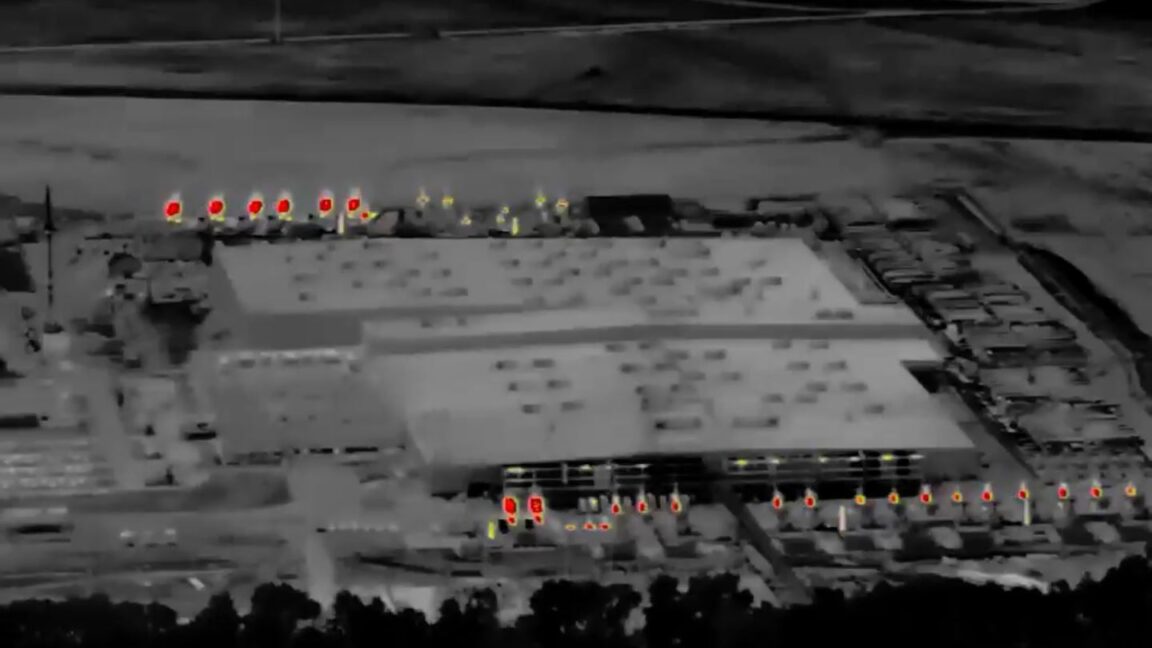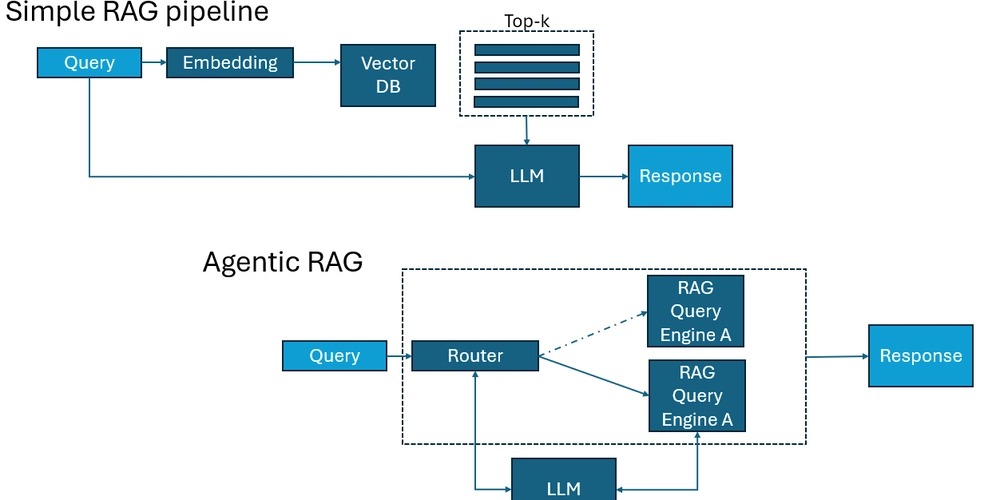Dockerize ML Project and Push to Docker Hub
This post is about building a Docker image for a simple machine learning project and pushing it to Docker Hub. It walks you through each step from writing a Dockerfile to verifying the image on Docker Hub with real command line examples and screenshots from the actual build and push process. Prerequisites Docker installed on your system. A Docker Hub account. A project with a Dockerfile (we’ll use a Python-based ML app in this case). Step 1: Create a Dockerfile In your project directory, create a file named Dockerfile (without extension) and add the following: FROM python:3.11-slim WORKDIR /app COPY . . RUN pip install pandas scikit-learn matplotlib CMD ["python", "your_script.py"] Make sure to replace your_script.py with your actual entry-point Python file. Step 2: Build the Docker Image Open your terminal and navigate to the project directory. Then run: docker build -t yourusername/imagename:tag . Example: docker build -t sathiya9944/24mcr094-ml:latest . This command builds the Docker image using the Dockerfile. Step 3: Login to Docker Hub Before pushing your image, log in to Docker Hub: docker login Enter your Docker Hub username and password when prompted. Step 4: Push the Image to Docker Hub Once logged in, push the image using: docker push yourusername/imagename:tag Example: docker push sathiya9944/24mcr094-ml:latest Screenshots Docker Build Output Docker Push Output Conclusion Now Docker image was built and pushed to Docker Hub using a real machine learning project. This image is now ready to be shared with others or deployed across different environments with ease.

This post is about building a Docker image for a simple machine learning project and pushing it to Docker Hub. It walks you through each step from writing a Dockerfile to verifying the image on Docker Hub with real command line examples and screenshots from the actual build and push process.
Prerequisites
- Docker installed on your system.
- A Docker Hub account.
- A project with a
Dockerfile(we’ll use a Python-based ML app in this case).
Step 1: Create a Dockerfile
In your project directory, create a file named Dockerfile (without extension) and add the following:
FROM python:3.11-slim
WORKDIR /app
COPY . .
RUN pip install pandas scikit-learn matplotlib
CMD ["python", "your_script.py"]
Make sure to replace your_script.py with your actual entry-point Python file.
Step 2: Build the Docker Image
Open your terminal and navigate to the project directory. Then run:
docker build -t yourusername/imagename:tag .
Example:
docker build -t sathiya9944/24mcr094-ml:latest .
This command builds the Docker image using the Dockerfile.
Step 3: Login to Docker Hub
Before pushing your image, log in to Docker Hub:
docker login
Enter your Docker Hub username and password when prompted.
Step 4: Push the Image to Docker Hub
Once logged in, push the image using:
docker push yourusername/imagename:tag
Example:
docker push sathiya9944/24mcr094-ml:latest
Screenshots
Docker Build Output
Docker Push Output
Conclusion
Now Docker image was built and pushed to Docker Hub using a real machine learning project. This image is now ready to be shared with others or deployed across different environments with ease.










































































































































































![[The AI Show Episode 144]: ChatGPT’s New Memory, Shopify CEO’s Leaked “AI First” Memo, Google Cloud Next Releases, o3 and o4-mini Coming Soon & Llama 4’s Rocky Launch](https://www.marketingaiinstitute.com/hubfs/ep%20144%20cover.png)



















































































































































































.jpg?width=1920&height=1920&fit=bounds&quality=70&format=jpg&auto=webp#)






















































































_Olekcii_Mach_Alamy.jpg?width=1280&auto=webp&quality=80&disable=upscale#)














































































































![Most iPhones Sold in the U.S. Will Be Made in India by 2026 [Report]](https://www.iclarified.com/images/news/97130/97130/97130-640.jpg)
![Apple to Shift Robotics Unit From AI Division to Hardware Engineering [Report]](https://www.iclarified.com/images/news/97128/97128/97128-640.jpg)





































































































































